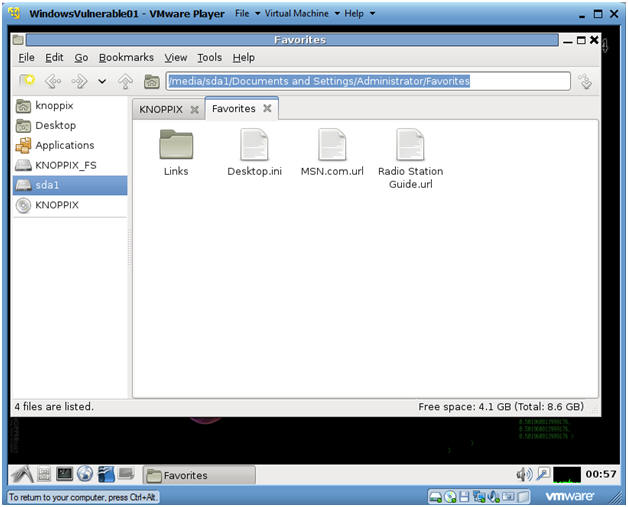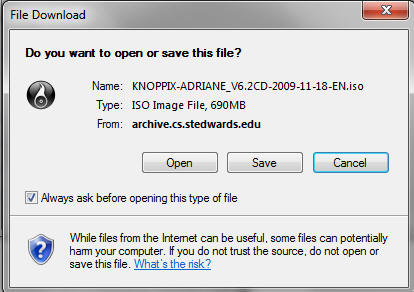


- #KNOPPIX WIPEFS COMMAND HOW TO#
- #KNOPPIX WIPEFS COMMAND INSTALL#
- #KNOPPIX WIPEFS COMMAND DRIVER#
- #KNOPPIX WIPEFS COMMAND SOFTWARE#
- #KNOPPIX WIPEFS COMMAND ISO#
Grub needs to load the initrd on its own and the arguments go on the kernel line. APPEND tells isolinux the arguments to pass to the kernel. The line starting with DEFAULT tells isolinux which kernel in /boot/isolinux to use. This is the Knoppix partition which is exactly what we want. On booting, the root is set to the boot device. The default configuration on 4.0.2 is:ĪPPEND ramdisk_size=100000 init=/etc/init lang=us apm=power-off vga=791 initrd=minirt.gz nomce quiet BOOT_IMAGE=knoppixĬonverting this to a Grub boot is relatively straight forward. These are the different default Knoppix configurations. (Note: On Redhat/Fedora based systems, the grub configuration file is called nf, not menu.lst as on Debian systems, so replace menu.lst with nf below.) Look at /mnt/boot/isolinux/isolinux.cfg. # grub-install -root-directory=/mnt -no-floppy '(hd0)'įinally, create a menu.lst file.

# echo '(hd0) /dev/sda' > /mnt/boot/grub/device.map
#KNOPPIX WIPEFS COMMAND INSTALL#
To install the stage1 boot loader to the drive's master boot record (MBR), edit the device.map file to tell grub-install that /dev/sda1 is a bios drive: (Note - You may want to try the grub-install command below before bothering to find those stage* files, since a recent version will do the copy itself.) Assuming your distribution has Grub's loader in /boot/grub: It is easiest to simply copy all of Grub's files. To set up Grub to boot from the USB drive, copy Grub's working files, namely, stage1, stage2 and the appropriate stage1_5 file, to the partition.
#KNOPPIX WIPEFS COMMAND ISO#
Mount the partition and copy the contents of the KNOPPIX ISO image (named KNOPPIX.iso below) to it: If you want to be able to access your files from windows (using explore2fs for instance) make sure you do this instead: Warning: Newer versions of mke2fs now create filesystems with inode sizes of 256 by default (instead of 128), which is causing compatibility issues with a lot of ext2/ext3 tools out there. boot/grub/stage1 not read correctly".) Assuming you settle on an ext3 filesystem: (If they differ, grub-install will fail with a confusing message "file. Regardless, make sure the partition type (set when you partition the drive) matches the filesystem you install.

You can use an existing VFAT filesystem (to keep compatibility with Windows/DOS). The rest of this discussion assumes that you can address this partition using /dev/sda1. cfdisk) large enough to hold the contents of the ISO image plus about 5%. This tutorial assumes that you are already running GNU/Linux (and has been tested on Debian).Īttach your USB device to your computer and create a partition (using e.g. To boot an unmodified Knoppix from a USB stick or USB hard drive is quite easy although it requires a few steps. You can create your own copy of Knoppix on USB using the tutorial below (and here: Bootable USB Key), or you can buy a USB stick with Knoppix here for $14.95 including shipping to anywhere in the world. You can also do it, by preparing the partition(s) as above, then boot to windows, and format it as FAT32.Knoppix is a GNU/Linux distribution that boots and runs completely from cd it can also boot and run completely from a USB drive.
#KNOPPIX WIPEFS COMMAND DRIVER#
Older versions of the FAT32 driver cannot format, so you need to use the DFSEE tool to do it. To be sure that it works, EJECT the stick, and mount it again. Now, you can format the partition(s) using the FORMAT command, or RMB on the drive icon, and select Format from the menu. Next, use miniLVM to create your partition(s) and add drive letters, if desired. Important: EJECT the stick, and mount it again. If this doesn't work, you probably need to use DFSEE, or the tool in ArcaOS, to wipe the front of the disk (might be a good idea anyway, to remove all traces of anything that OS/2 might not like). Next use miniLVM (RMB on the Drives object, and select Manage volumes) to delete everything that is on the stick.
#KNOPPIX WIPEFS COMMAND HOW TO#
You DO have to prepare the device properly (I will talk about USB now), and this is probably what your $20 bought you.įirst, you probably want to save any files that may be on the stick, BEFORE you do anything else, so you can recover it, if you want to (use an operating system that knows how to read the stick, or use DFSEE to image it).
#KNOPPIX WIPEFS COMMAND SOFTWARE#
If you are using the latest versions of the FAT32 driver, it will let you format a drive (HDD, or USB) directly, with no other software required.


 0 kommentar(er)
0 kommentar(er)
